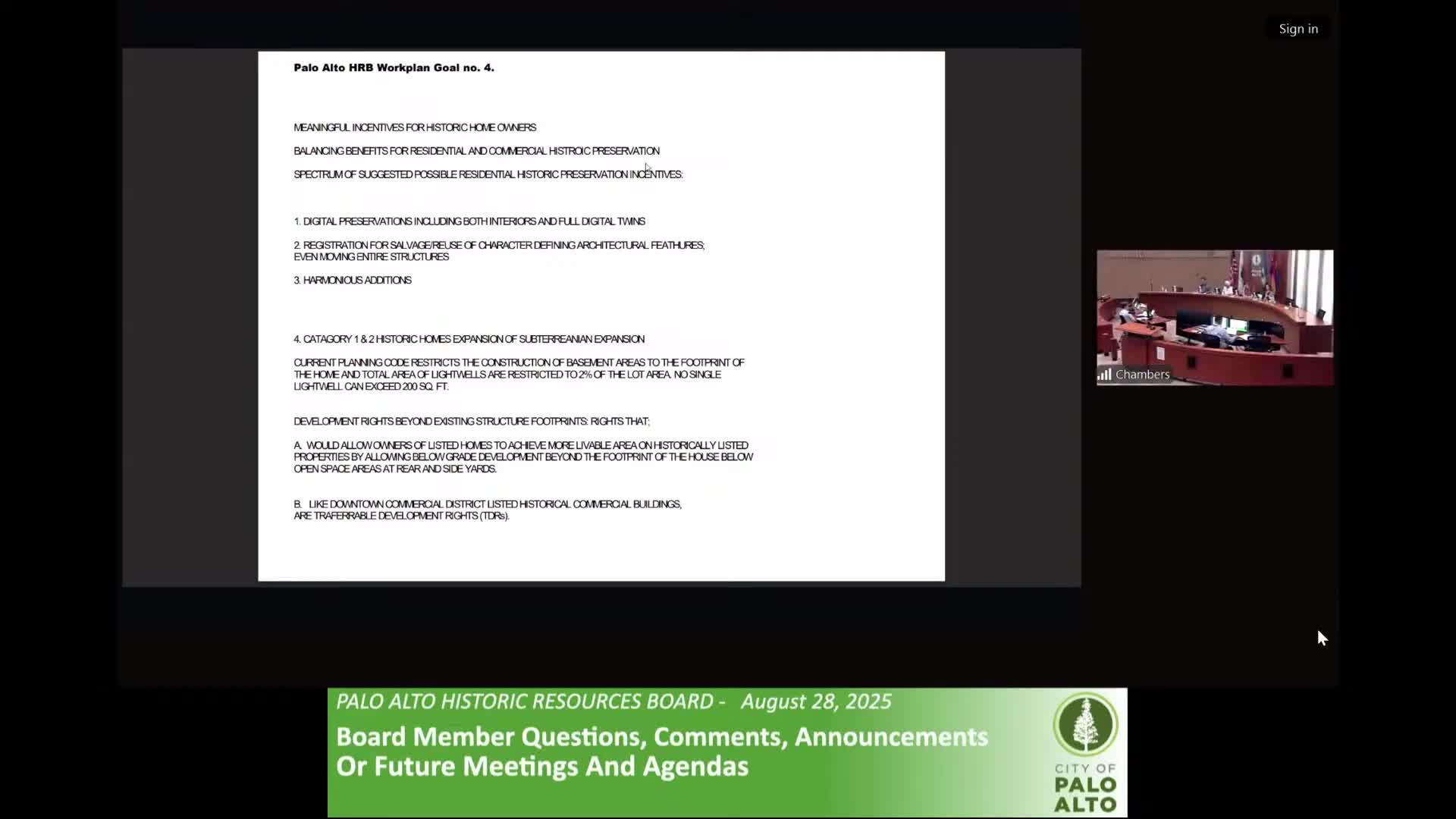Palo Alto Proposes Expanded Subterranean Development Rights for Historic Residential Properties
August 29, 2025 | Palo Alto, Santa Clara County, California
Thanks to Scribe from Workplace AI and Family Portal , all articles about California are free for you to enjoy throughout 2025!

This article was created by AI using a video recording of the meeting. It summarizes the key points discussed, but for full details and context, please refer to the video of the full meeting. Link to Full Meeting
The proposal seeks to enable homeowners to construct basements that extend beyond the existing footprint of their homes, potentially increasing livable space significantly. Currently, city regulations restrict basement construction to the size of the building's footprint, limiting the potential for expansion. By allowing homeowners to develop basements that utilize the entire lot size, the city hopes to incentivize the listing of historic properties on the city register.
One of the key discussions revolved around the transferability of these development rights. Similar to practices in the downtown commercial district, homeowners would be able to sell their subterranean development rights to other residential property owners within the district. This could create a win-win situation: homeowners could enhance their properties while contributing to the preservation of historic structures.
The board also examined a case study involving a property in Professerville, which had been on the market for a year. The proposed changes could allow for a substantial increase in the property's square footage, from 3,400 to potentially over 10,000 square feet, depending on the development rights sold. This expansion would not only preserve the historic character of the home but also provide modern amenities, such as larger parking facilities and additional living space.
However, the proposal is not without its challenges. Concerns were raised about the implications for local hydrology and groundwater management, as well as the need for adjustments to existing zoning laws. The board acknowledged that while the initiative could lead to a greater number of historic homes being preserved, it would require careful planning and community input.
As the meeting concluded, the board members expressed optimism about the potential for this initiative to foster a partnership between the city and homeowners. By offering tangible benefits for preserving historic properties, Palo Alto aims to strike a balance between honoring its architectural heritage and accommodating the needs of modern living. The discussions set the stage for further exploration of this innovative approach to urban development, leaving residents curious about how these changes might reshape their neighborhoods in the future.
Converted from Historic Resources Board Meeting - August 28, 2025 meeting on August 29, 2025
Link to Full Meeting
Comments
View full meeting
This article is based on a recent meeting—watch the full video and explore the complete transcript for deeper insights into the discussion.
View full meeting
